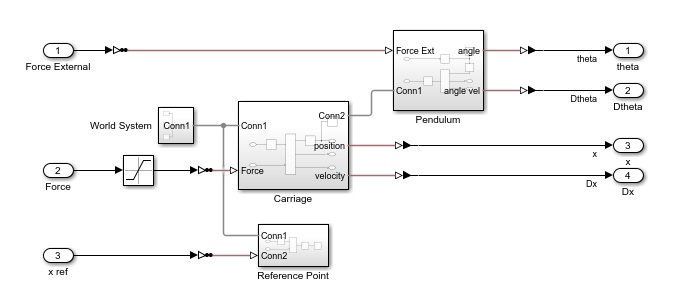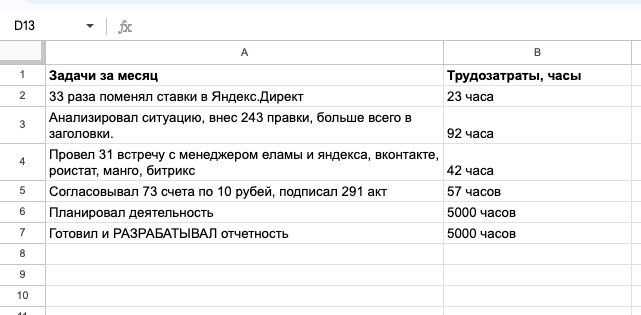The world’s first solar-powered series lamps

I spoke about Sunlike technology from the Korean company Seoul Semiconductor back in 2018.
Conventional LED lamps use LEDs with crystals that emit blue light. The crystal is coated with a two-component phosphor that converts blue light to white (one component adds the red part of the spectrum, the second adds green, and blue light seeps through the phosphor itself). Sunlike LEDs use crystals that emit violet light and a three-component phosphor that creates the red, green, and blue parts of the spectrum. This is less efficient, but the spectrum is even and all colors are transmitted perfectly.
For comparison, the spectra of three LED lamps with a color temperature above 5200K: normal with CRI 80, lamps with CRI 95 and lamps with Sunlike.

Two years ago, Sunlike LEDs were very expensive. That is why large companies did not try to make bulbs on them – few people are ready to buy one lamp for one and a half to two thousand rubles (I note that one enthusiast from Belarus nevertheless set up handicraft production of lamps in Sanlayki, I wrote about it).
Now prices have fallen, and although Sunlike LEDs are still an order of magnitude more expensive than usual, it has become possible to start producing lamps with E27 and E14 sockets at affordable prices – from 350 to 399 rubles.
I am proud that the world’s first manufacturer to launch the production of such lamps under the brand Remez, became a Russian company (albeit with a legal entity in Germany). By the way, earlier the same company released table lamps on Sunlike LEDs (I did their review: habr.com/ru/company/lamptest/blog/437276).
Now released 8 types of lamps with a “solar” spectrum. These are “pears” A60 E27 with a power of 7 and 9 W and “candles” with a socle E14 with a power of 5 and 7 W. The lamps are issued with two color temperatures of light – warm white light 3000K and cool white light 5700K.
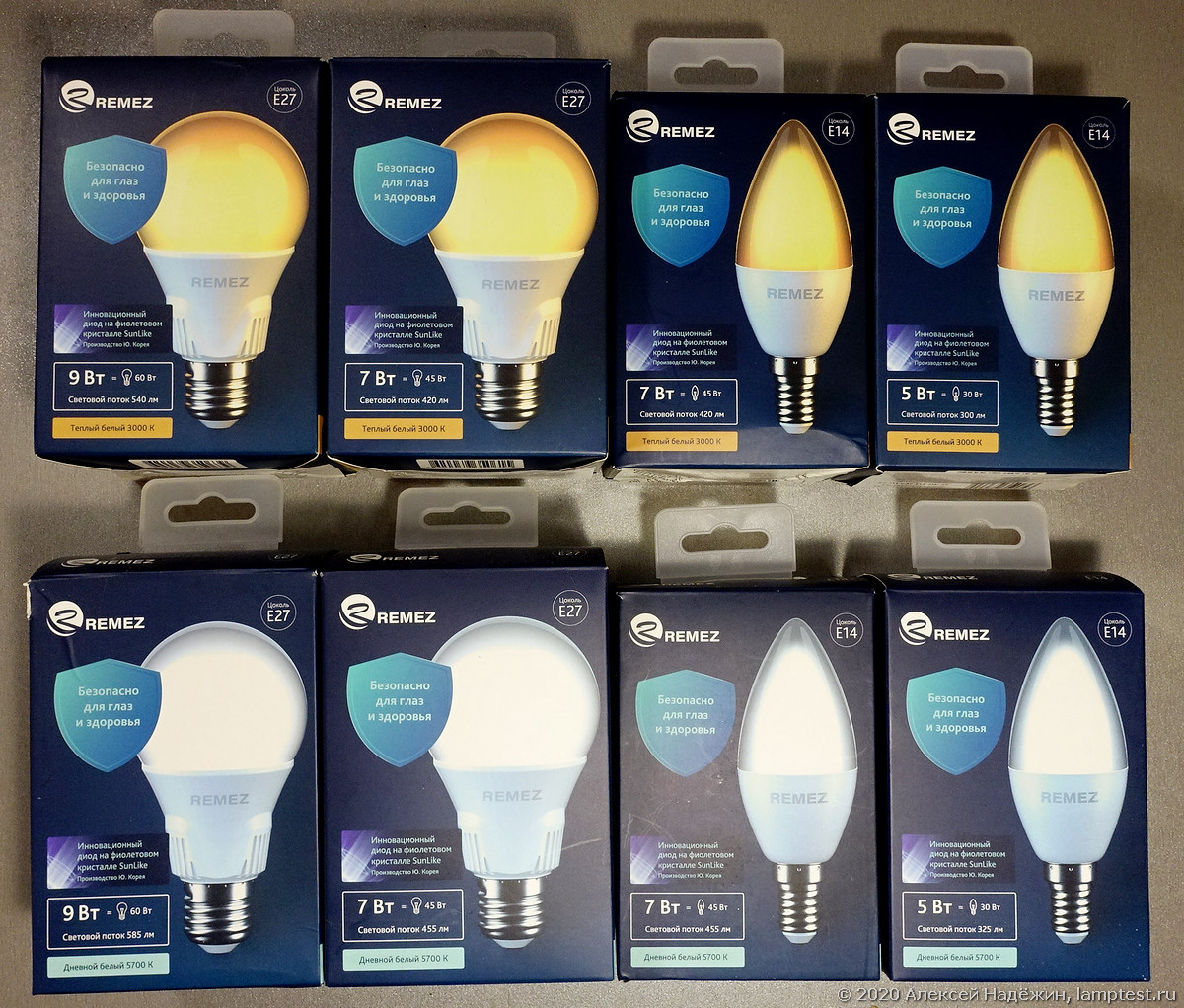
A nine-watt lamp gives the same brightness as a 60 W incandescent lamp, seven-watt lamps shine like Ilyich’s 40-watt bulbs, and a 5-watt candle replaces a 30-watt incandescent lamp.
I tested two copies of each of these lamps. The results of lamps that showed slightly worse and slightly better characteristics are presented in two tables.


As can be seen from the results, the differences between the two instances are insignificant (up to 7.5% in the luminous flux).
All lamps have a low level of light pulsation (0.5% or less).
All lamps have a very high color rendering index CRI (Ra) (96-98) and high color rendering indices (R1-R15 – above 91).
Power, luminous flux, incandescent lamp equivalent and color temperature are close to those stated.
All lamps, except for five-watt candles, work correctly with switches that have an indicator. Five-watt candles glow dimly when such a switch is turned off.
All lamps can work without reducing the brightness with a significant decrease in the supply voltage, in fact, they have a built-in stabilizer. Nine-watt lamps reduce brightness by 5% when lowering the supply voltage to 129 V, the rest when lowering to 113 V. This allows the use of lamps in areas with low and unstable voltage in the network.
Luminous flux, color temperature, and color rendering index were measured using a two-meter integrating sphere and an Instrument Systems CAS 140 CT spectrometer, power consumption and power factor with a Robiton PM-2 instrument, pulsation with a Uprtek MK350D instrument. The minimum operating voltage, at which the luminous flux was reduced by no more than 5% of the nominal, was measured using a Lamptest-1 device, a Stabil Instab 500 stabilizer, and a Suntek TDGC2-0.5 LATR. Before measurements, to stabilize the parameters of the lamp, they were heated for half an hour.
Test results and spectra of 9 W “pears” with warm and cold light:
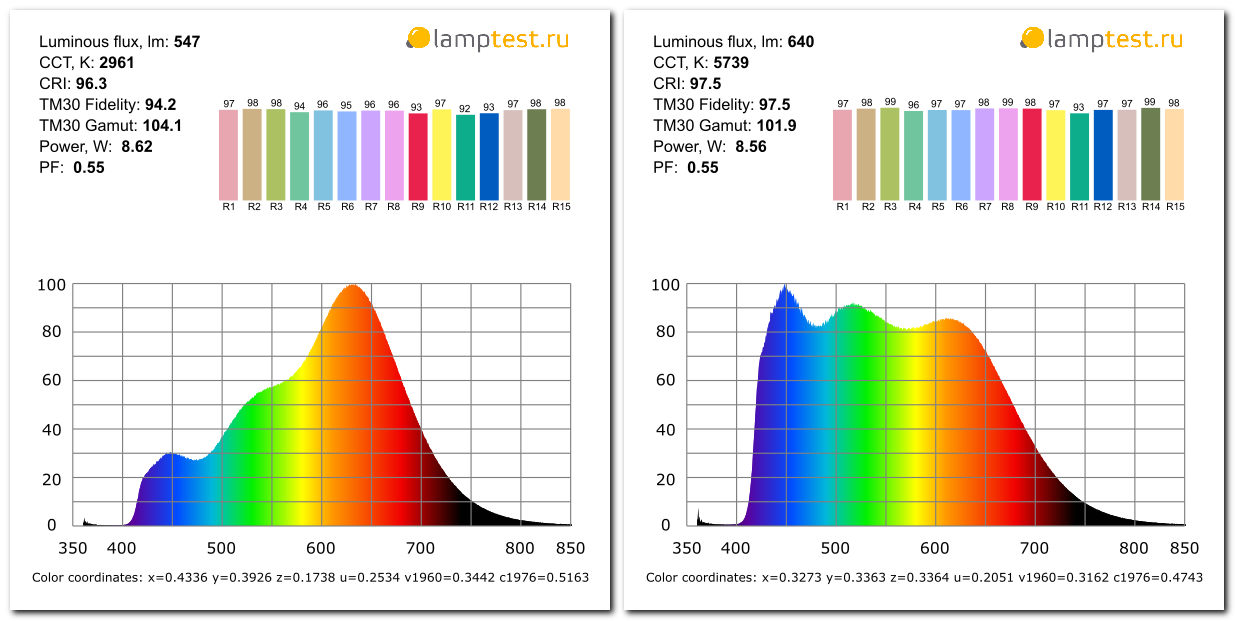
Test results and spectra of “candles” 7 W with warm and cold light:
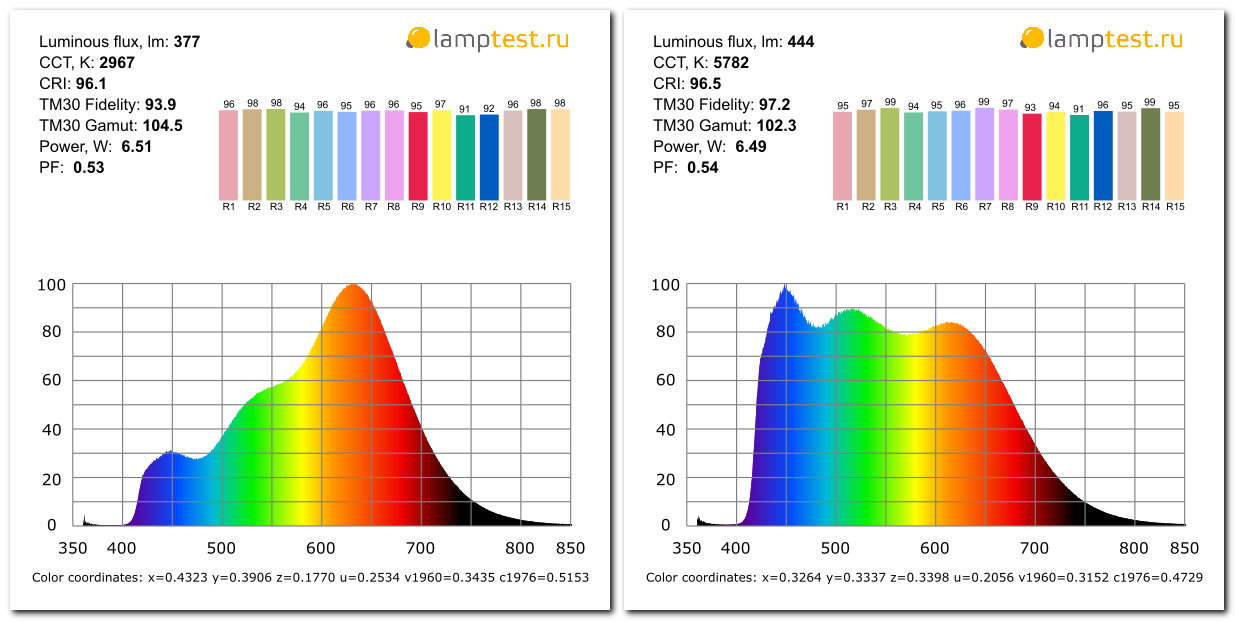
On the manufacturer’s website laid out lamp test reports at the Archilight laboratory. After 1000 hours of operation, the luminous flux of a nine-watt lamp fell by only 0.9% and this is an excellent result, on the basis of which it can be assumed that the lamps will work for a long time. By the way, the manufacturer gives them a 5-year warranty.
The efficiency of conventional LED lamps with a CRI of about 80 has now reached 120 lm / W. The lamps on the Sanlayks have it much lower – 60-75 lm / W, but it seems to me that you can safely sacrifice efficiency for the sake of high-quality light. Yes, and at 400 rubles per bulb it is quite possible to pay to achieve the ideal.
I expect that many will begin to lament that the brightest “pear” with warm light gives only 540 lm, and the brightest “candle” is 375 lm. I can assume that the manufacturing company did not produce more powerful lamps in order to prevent overheating and degradation of LEDs and to ensure a long service life. But why the 7 W pears and 5 W candles were produced is a mystery to me – they hardly differ in price and most likely most of them will want to buy brighter 9 W pears and 7 W candles.
It’s great that LED lamps with perfect light finally appeared. I don’t understand the decision of the manufacturer to release lamps with a color temperature of 5700K, but I can safely recommend everyone with a warm light of 3000K.
P.S. Remez lamp test results at Lamptest.ru
© 2020, Alexey Nadezhin


